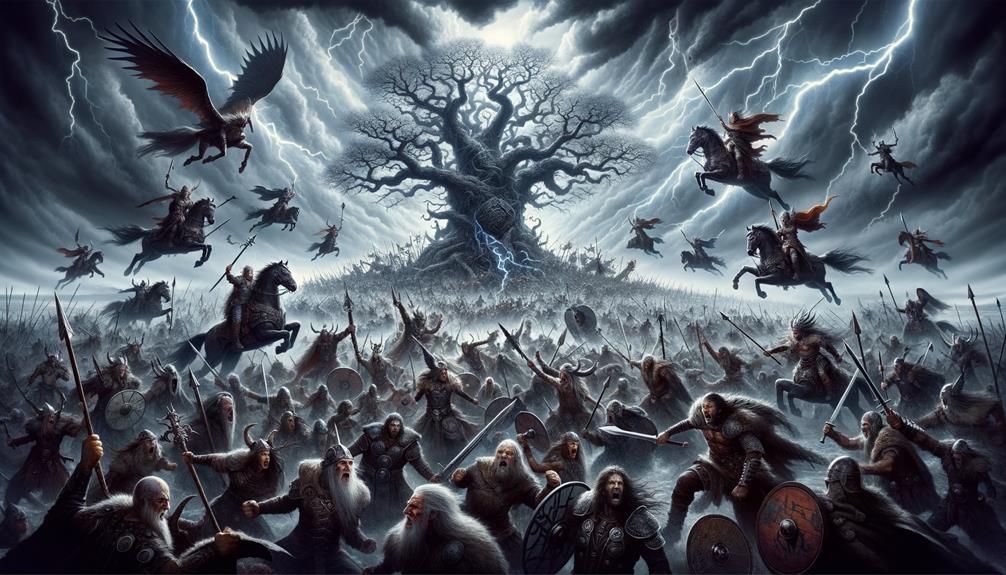Ever thought about how the world might end, according to the old Norse legends? I've spent many an hour delving into the complex tale of Ragnarok, the mythical Norse apocalypse. It's a riveting mix of predictions, grand warfare, and earth-shattering occurrences that sees our world destroyed and then reborn. But it's more than just a story about the end of things. It's also a deep contemplation on the recurring patterns of life, as seen by our Norse ancestors. So, let's strip back the artistry of this rich folklore, and maybe we'll find something more than just the end of a world.
Understanding the Concept of Ragnarok

To comprehend Ragnarok, we have to dive into the cyclical pattern of life where destruction makes way for rebirth and renewal. This deep notion, nestled in the heart of Norse mythology, illustrates life's rise and fall, reflecting the never-ending changes in the Viking universe.
To truly grasp Ragnarok, it's not enough to know the Old Norse legends. It's about accepting the cyclical rhythm of life, seeing downturns as chances for introspection and improvement. Ragnarok isn't the final end; it signifies the cosmos' ruin and rebirth, emphasizing life's cyclical pattern.
Adapting this view can shift our perception of our own life paths. Rather than chasing a straight line of progress, we ought to focus on extended periods to observe the overall rise and ready ourselves for the falls. This ancient advice nudges us to battle till the last breath, embodying the warrior spirit. Just as the Norse gods met Ragnarok with steadfast resolve, we should also tackle our struggles head-on, relentless in our pursuit of our beliefs.
The Prelude to Norse Apocalypse
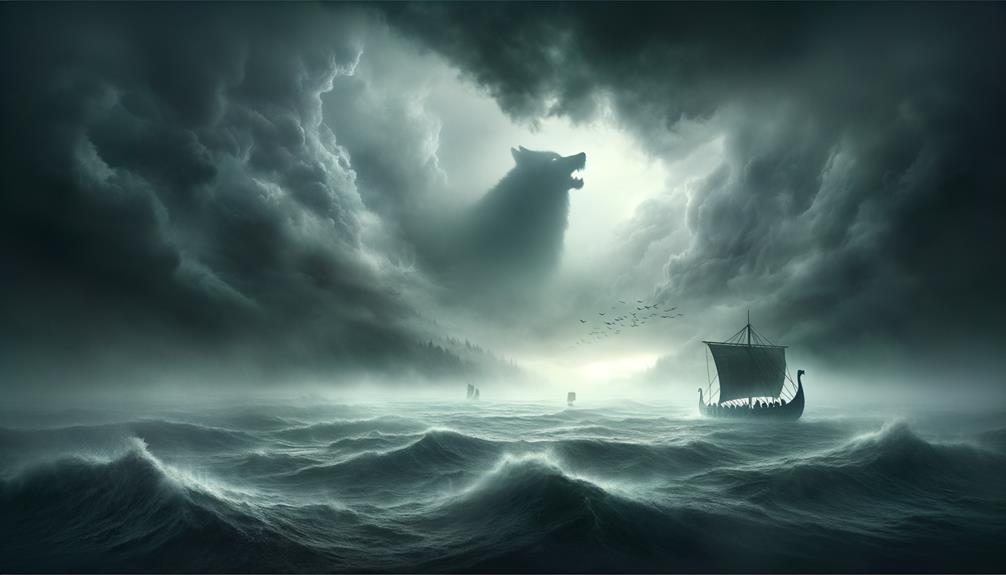
We've dug deep into the cycle of life and death in Norse mythology and seen what it might mean for us. Now, let's focus on the big events that set the stage for Ragnarok, or the Norse apocalypse. These details come courtesy of Snorri Sturluson, a famed historian from Iceland. He tells us that the lead-up to the Norse apocalypse was filled with a series of earth-shattering happenings.
Here's a quick rundown for you:
| Event | Description | Outcome |
|---|---|---|
| Fimbulwinter | A brutal, relentless three-year winter without any summer breaks | Massive suffering |
| The Loss of Morality | A time filled with greed, fratricide, and warfare | The collapse of societal norms |
| The Skies Turn Red | The heavens stained with the blood of the deceased | A chilling forecast of the impending doom |
While these events were certainly disturbing, they didn't signal the absolute end. Instead, they were a sort of curtain-raiser for the universe's reboot, known as Ragnarok. This cycle of destruction and rebirth is a key concept in Norse mythology. Just like the Vikings accepted these cycles, we can also get better at handling the ups and downs in life, taking inspiration from the fortitude shown by the Norse gods during the apocalypse.
Major Players in Ragnarok
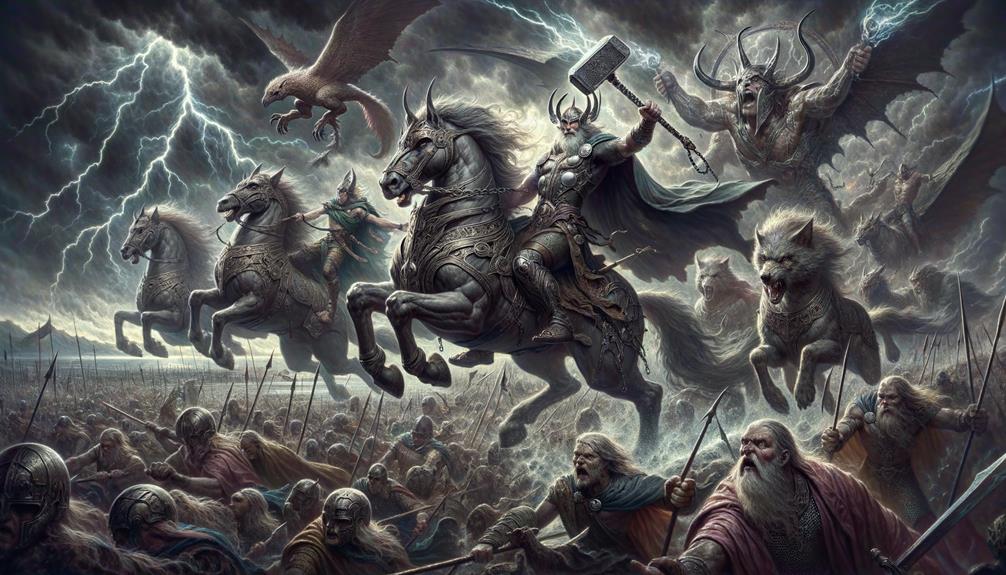
When examining the core of the Ragnarok story, the roles of the gods, such as Odin, Thor, and Loki, can't be ignored. They're at the heart of this apocalypse storm. They're more than just mythical figures, they're pivotal characters in a cosmic battle that deeply imprinted on Nordic culture. Each has a special contribution to the harrowing tale of the end times.
Odin, the Allfather, takes charge of the Aesir gods in their fight against the giants. His intelligence and tactical acumen, as portrayed in Emil Doepler's expressive art, are key to the climactic showdown. Odin's son, Thor, the god of thunder, provides raw power and a fiery passion, with his hammer Mjolnir symbolizing defiance in the face of disorder.
Let's also talk about Loki, the trickster god. His part is complicated, a unpredictable factor who in the end sides with the giants, introducing a fresh twist of tension and treachery to the story.
In unison, these central figures drive the chaotic events of Ragnarok, their behaviors and decisions echoing the unpredictable nature of destiny in Norse mythology. Getting a grasp on their roles opens up a path to a more profound understanding of this captivating story of the end times.
Key Events of Ragnarok
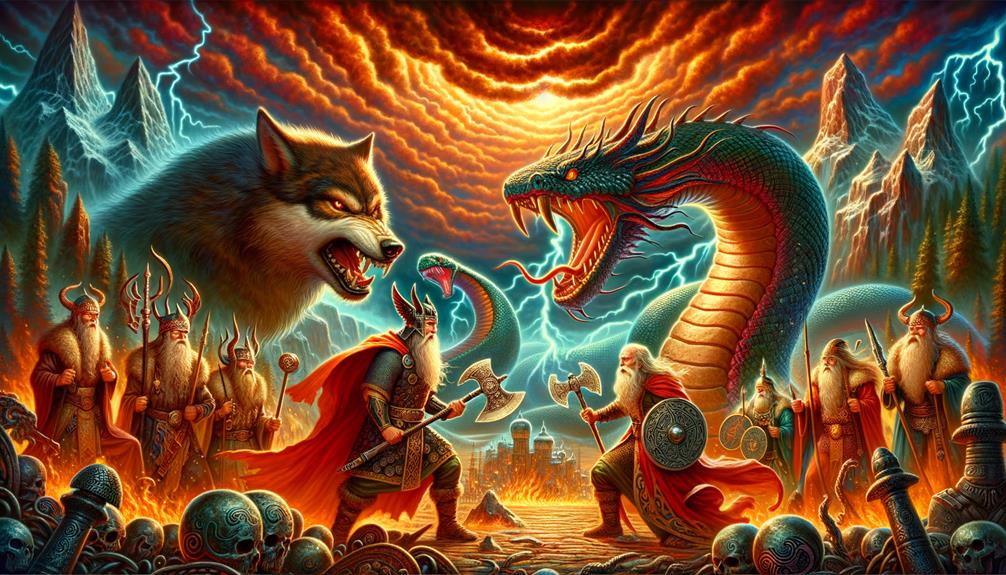
Getting a grip on the roles of the Norse gods in Ragnarok can really broaden our understanding of this end-of-the-world tale. But don't forget to check out the major events that highlight the cyclical nature of life as told in Norse mythology. You see, the Norse end of the world isn't a final curtain, but more like an extreme makeover that ushers in a fresh start.
| Major Event | What's it About? |
|---|---|
| Fimbulvetr | This is a brutal three-year winter that acts as the opening act for Ragnarok, signaling the start of the end-times |
| Major Clash | Here's where the gods and their enemies go head-to-head, causing mutual destruction |
| Wind Age | After the world goes under, it comes up for air anew, primed and ready for a fresh start |
Let's talk about the number 14 for a moment. It's kind of a big deal here, with fourteen gods taking a fall in the Major Clash. Only a few survive to pick up the pieces. The cycle of destruction and rebirth in this story can be seen as an analogy for real-life struggles. Just like the Norse gods, we too can bounce back from defeat, using hard times as moments for introspection and growth. Bottom line, Ragnarok's key events symbolize the universe's rhythm of give and take – a powerful reminder of the ongoing cycle of life and death, destruction and creation.
The Aftermath and Rebirth
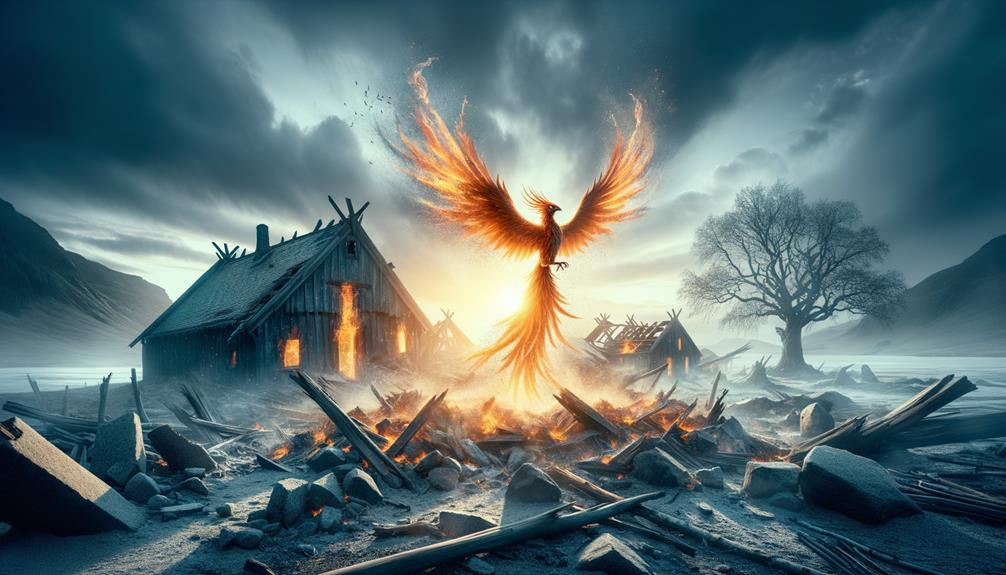
So, we're talking about the striking period that comes after Ragnarok, a time of rebirth and fresh beginnings, rising from the remnants of the old world. In the world of Norse mythology, the world gets reduced to nothing more than a barren wasteland by the flames of Surt's fiery sword. But here's the interesting part – out of this devastation, it's predicted that a new, fertile world will emerge.
Our main source of information on this topic, the ancient Norse texts known as the Eddas, tell us a tale of two human survivors, Lif and Lifthrasir. They find their way out from the holy tree, Yggdrasil. And the cool part? From them, all of humanity is reborn.
At the same time, the earth goes through a massive change. The sea pulls back, revealing a land filled with lush fields where crops grow without any need for farming. The sun, which was previously swallowed by the chaos of Ragnarok, is replaced by a daughter, just as bright and warm as her mother. A new world, full of life, springs forth from the water.
Frequently Asked Questions
How Does Ragnarok End in Norse Mythology?
You might be curious about how the story of Ragnarok concludes in Norse mythology, right? Well, it all wraps up with a fresh start. Picture a colossal battle that wipes everything out. After this calamity, the world rises from the water, totally renewed. This is a metaphor for the cycle of life – with every end, there's a new beginning. It also offers an optimistic view of the possibilities that come after devastation. It's like a phoenix rising from the ashes, really. So, in essence, Ragnarok's end isn't really an end, but a new lease on life.
Is Ragnarok the Norse Apocalypse?
Absolutely, Ragnarok does represent the Norse version of an apocalypse. It's kind of like a recurring cycle of doom and rebirth. The idea is that the world comes to an end, and then kicks off again, which just goes to show that every tough break can spark a fresh start.
Does Ragnarok Get Prevented in Norse Myth?
Well, here's the thing: in the world of Norse mythology, Ragnarok isn't something you can simply sidestep or avoid. It's a monumental event, a turning point that spells out the end of the world only for it to be reborn anew. This reflects the Norse conviction that destiny can't be tampered with or altered. After the dust settles, the world is repopulated by the gods who made it through and a couple of lucky humans.
What Is Ragnarok an Apocalyptic Prophecy?
Indeed, Ragnarok is a prophecy of the world's end. Picture it like a severe storm that rips the world to pieces, only to give way to a new, rejuvenated world. In Norse mythology, it represents a cycle of destruction, followed by rebirth.

